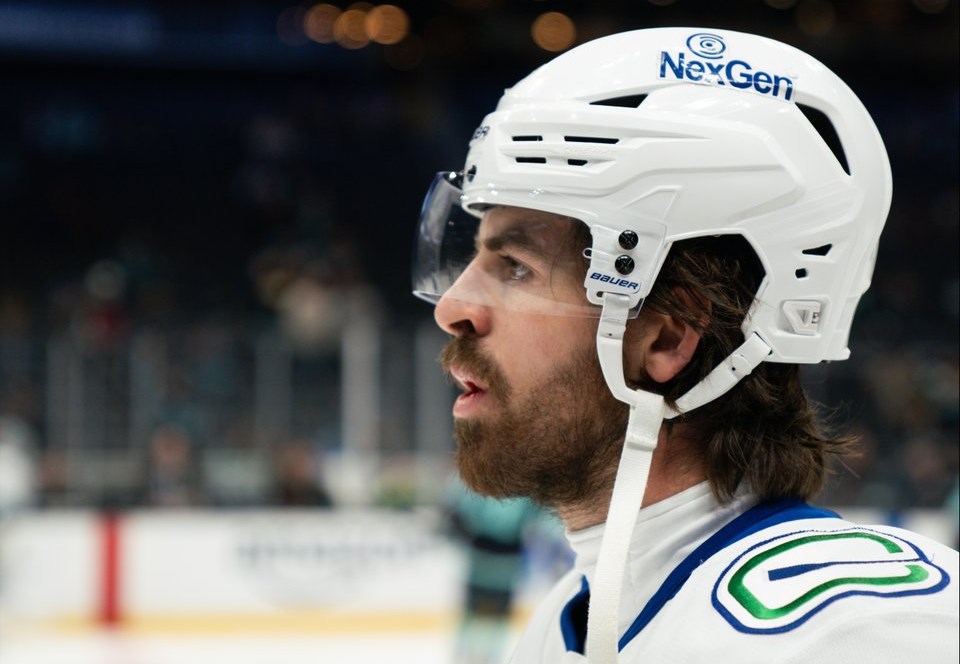Most of the changes to the NHL’s collective bargaining agreement with the NHL Players’ Association won’t be visible on the ice.
The memorandum of understanding (MOU) agreed to by the the NHL and NHLPA will amend the CBA in many ways, but most of those changes take effect off the ice. For instance, players won’t be able to have their salary retained twice in a trade within a 75-day period, removing the incentive for some of the creative three-team deals that have taken place in recent years.
Also, teams will no longer be allowed to paper players down to the AHL to reduce their cap hit, but must play at least one game in the AHL before they can be called back up to the NHL. The Canucks took advantage of papering players down to the Abbotsford Canucks to accrue additional cap space last season, even if they never actually used that cap space at the trade deadline.
One change to the CBA, however, will have a visible impact on the ice, and it means players will start to look a lot more like Conor Garland.
No, the league isn’t putting in a maximum height limit or mandating that players grow moustaches — they actually added a rule that teams cannot mandate a dress code, which would presumably include facial hair. Instead, the NHL is mandating the use of cut-resistant neck protection.
Only new NHL players will be required to wear a neck guard
The new rule — Rule 9.9 in the official rulebook — will read as follows, according to the MOU:
Beginning with the 2026/27 season, Players who have zero games of NHL experience must wear cut resistant protection on the neck area with a minimum cut level protection score of A5, in accordance with the ANSI/ISEA 105-2016 Standard.
There has been a strong push worldwide for hockey leagues to mandate neck protection after the tragic death of Adam Johnson in 2023 from a skate cut to the neck in an EIHL game in England. Many junior leagues began to require neck guards the week shortly after Johnson’s death, and they were subsequently joined by several professional leagues, including the AHL ahead of the 2024-25 season.
Now, the NHL will follow suit. Unlike the AHL, however, their rule does not apply to all players. Instead, it only applies to players who start their careers in the 2026-27 season and beyond.
This is similar to how the NHL introduced its mandatory helmet rule in 1979 or the mandatory visor rule in 2013, grandfathering in players already in the league who were used to playing without a helmet or a visor.
This is because there was no appetite among the players for a league-wide neck guard mandate. The Athletic ran a poll last year asking players if they wanted the league to require neck guards and a whopping 78 per cent of respondents said “No.”
The agreement to add a mandate for new players to wear neck guards suggests that “No” actually meant, “Fine, as long as I’m not forced to wear one.”
Why Conor Garland wears a neck guard
Conor Garland, for his part, has been wearing a neck guard since 2023, citing a moment where Connor Bedard’s skate came terrifyingly close to Mark Scheifele’s neck as the reason when asked about it on Hockey Night in Canada After Hours.
“There was an incident where it looked like Mark Scheifele got missed by a skate by a little bit, and that kind of scared me,” said Garland. “I figured I might as well put it on. It’s just protection, I don’t feel it…I really haven’t even thought about it since I put it on.”
“I’m obviously lower to the ice than a lot of guys, so I wear it for a little extra protection,” he added.
Despite his own choice to wear a neck guard, Garland has not been an advocate for mandating that other players wear one, so he would have sided with the “No” votes in the player poll.
“I think personal choice is massive,” said Garland. “I think guys are able to make that decision for themselves, same as visors. Whatever you feel comfortable with wearing, you should wear.”
When Garland first began to wear a neck guard, he thought it would become commonplace, even if the decision was left up to each player individually.
“I wore one in junior. It’s a personal choice,” said Garland at the time. “I think it’s good. It’s obviously more protection. I’ve worn one my whole life, except in the American League and the NHL, it’s something I’m not unfamiliar with. It shouldn’t be too much of a story. I’m sure we’ll see a lot of guys wearing them more and more.”
That hasn’t been the case in the past two seasons, however. In 2024, the NHL reported that just 55 of the league’s 708 skaters were wearing a neck guard in the 2024-25 season — just 7.8 per cent.
With the new mandate, however, fans can expect to see neck protection become ubiquitous in the coming years. A decade from now, seeing a player without a neck guard will be like seeing Craig MacTavish playing without a helmet late into the nineties.



